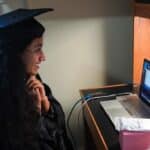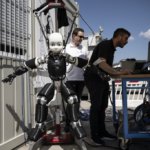
Child’s play isn’t all fun and games, it’s also a key way for kids to learn.
We know this thanks to multiple studies over the years, which have found that play is an essential component of early cognitive development, and also that the prosocial skills children glean from play are better indicators of future academic performance than measures of early academic performance.
In recent years, however – in part due to a focus on testing – play has dropped as a priority in many American classrooms, even for our youngest kids. We are hammering home two messages to children: number one that learning isn’t “fun,” and number two that play in school is an escape from learning instead of a way of learning.
Lunch and recess should not be the only places where students can enjoy themselves in school. Learning can and should be a joyful experience for children. Both formal research and experience suggest that when students have fun, they are more likely to be engaged and retain the material they learn. That’s why I’m a huge advocate for an instructional approach called project-based learning (PBL), through which students explore the world by playing a role (often of a professional) to complete a complex challenge.
Projects often cross the divisions of multiple school subjects and allow students to acquire, practice, and deploy new learning and skills as they work through them. Sometimes these projects are centered on a community issue they want to see improved, current events, topics of student interest, and/or work students hope to do someday.
A PBL approach makes it easy to structure learning through play. Students are invited to assume the role of an adult who might do the work of the project in real, everyday life. For example, students in a marketing course might be asked to imagine they’re working for a marketing firm as they develop a new social media marketing plan for a client. By taking on such a role, students might be willing to try something new, something they wouldn’t have otherwise tried as just a student. They might also get to practice their professional skills, especially those related to collaboration and professional communication.

A PBL approach makes it easy to structure learning through play. Source: Shutterstock
This way of teaching shows students that what they spend time studying really does matter out there in “the real world.” That’s especially true when we embed PBL within a broader “Career Readiness” approach.
In addition to the subjects we know are so important – math, science, English, history, etc. – a Career Readiness Education (CRE) offers elective classes that let students explore different industries such as healthcare, IT, agriculture, manufacturing and business. If any excite them, students can choose to take a pathway of classes covering topics specific to that industry, which not only helps them get a head start on their potential career, but also helps them make a sound decision about whether they need to invest in a four-year degree, two-year degree or simply complete training certifications once they get their diploma.
CRE also leaves plenty of room for play. Career classes are designed with input from industry experts, some of which also offer opportunities for work-based learning. Through job shadow, internship, externship and apprenticeship opportunities, students can put their newly learned skills to the test. Combining education with application, students can see themselves in these roles. They can more clearly visualize their future, and certainly increase their odds of finding career success soon after graduation.
It’s a bit like playing dress up, but instead of putting on clothes resembling a firefighter, a scientist, or a doctor and having no idea what kind of work comes with the uniform, CRE students know exactly what kind of work awaits them if they continue down that career path.
How we live does not and should not be drastically different from how we learn. We all want to have fun – students, teachers, all of us – and there’s no reason why we shouldn’t make learning enjoyable when there are obvious benefits from us doing so. When what students learn in school mirrors what students will eventually do outside of it, educators can be confident they’ve fulfilled their purpose: giving students the tools they need to succeed.
Heather Buskirk, MA is an instructional methods advisor at K12 and a national board-certified teacher with years of experience designing project-based learning. Buskirk was an integral part of designing and teaching at HFM PTECH, a project-based learning and career focused, early college high school in New York. She earned a BA in astronomy and physics and her MA in teaching with a physics certification from the University of Virginia.
Liked this? Then you’ll love…
Priceless or worthless? The problem with modern internships
Why project-based learning is beneficial for teachers and students







